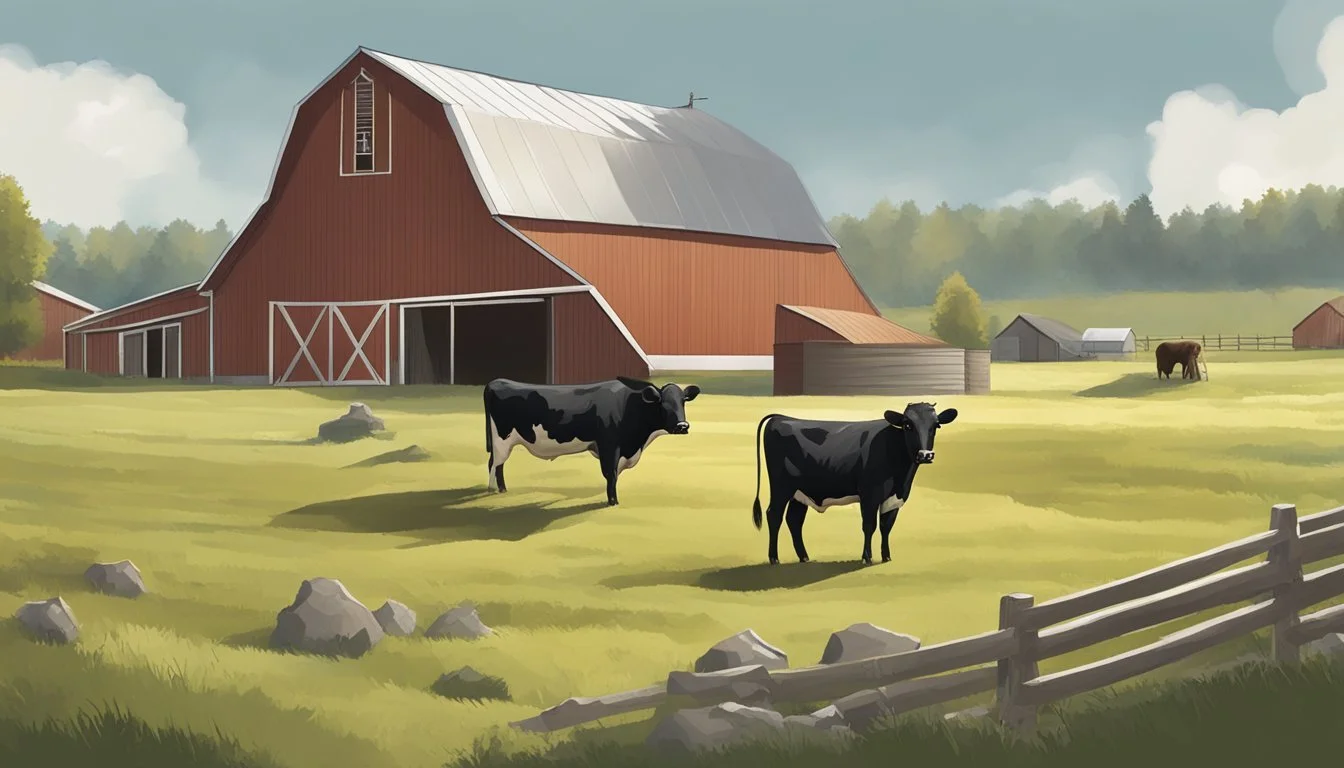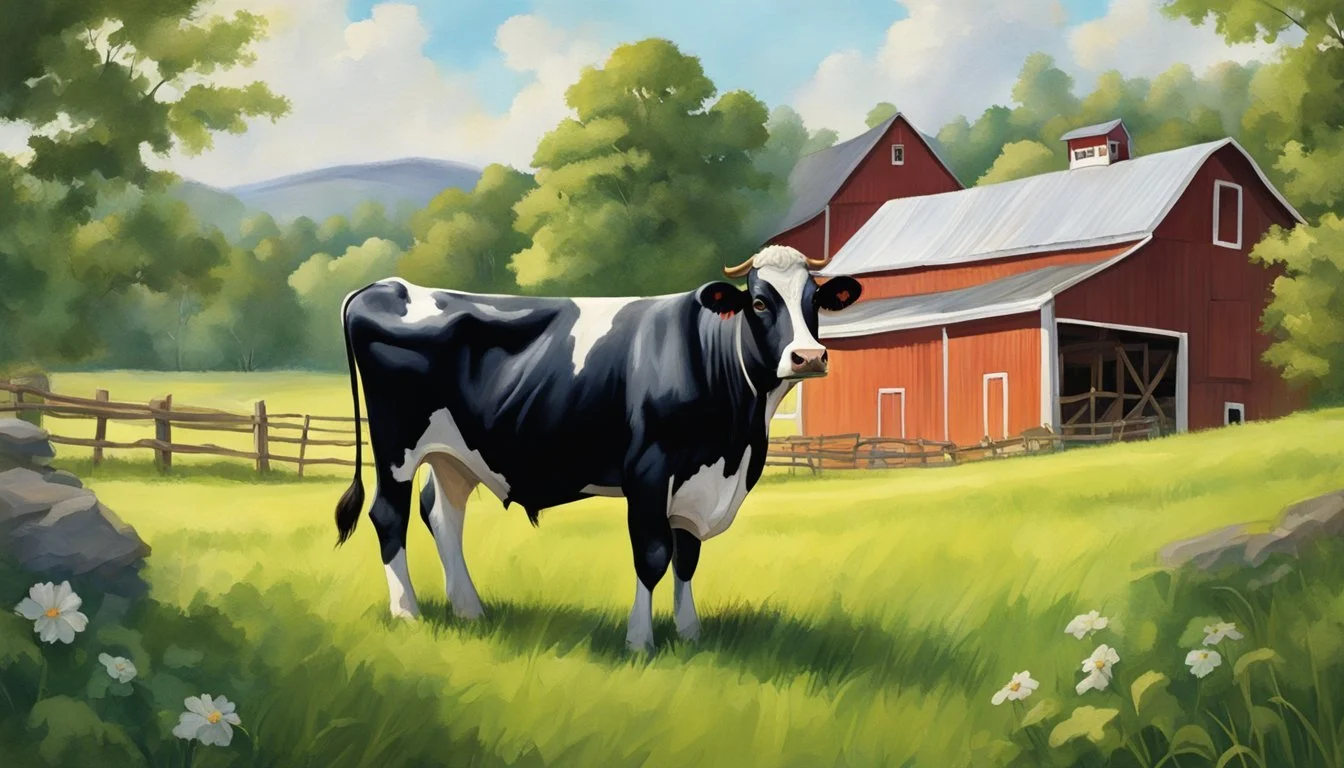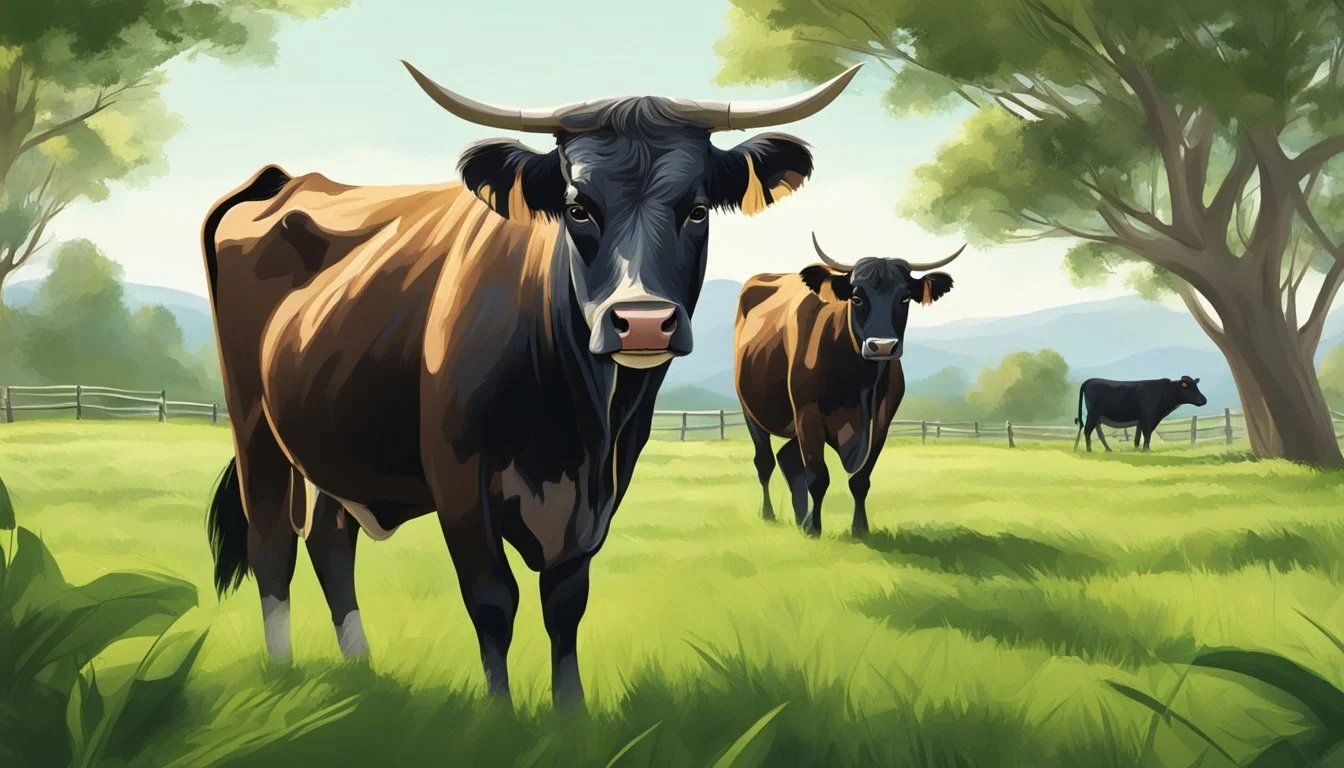The Legalities of Selling Dexter Cattle Products
Essential Compliance Guidelines
The sale of Dexter cattle products, encompassing both meat and dairy, is subject to a range of legal and regulatory considerations that vary by jurisdiction. It is critical for producers to be fully aware of and compliant with these requirements to ensure the legality of their operation. These laws are designed to safeguard public health, ensure animal welfare, and maintain market order. They can include specific regulations on the dehorning, vaccinating, castration, and weaning of livestock, as these practices can affect animal health and product quality.
Producers are also required to be familiar with the legalities surrounding the marketing and sale of Dexter cattle. Given their smaller stature and distinctive meat characteristics, such as their natural tenderness and favorable fatty acid profile, Dexters occupy a unique niche in the beef market. Adherence to appropriate labeling and marketing claims is essential to maintain consumer trust and market integrity. Additionally, understanding local market prices and consumer trends can be instrumental in shaping a profitable business strategy.
Environmental stewardship and sustainable farming practices are also becoming increasingly relevant in the cattle industry. Producers of Dexter beef may need to navigate regulations pertaining to land use, waste management, and pasture maintenance. Ensuring that agricultural activities do not harm the environment is not only a legal responsibility but also a moral one that aligns with the growing consumer demand for ethically produced food products.
History and Origin of Dexter Cattle
The development of Dexter cattle spans centuries, beginning in Ireland and evolving through societies dedicated to their preservation. It is a history marked by dedicated breeding practices and societies ensuring the breed’s survival.
Irish Roots and Mr. Dexter
Dexter cattle trace their lineage back to the rugged landscape of Ireland, emerging from the region of County Kerry in the 18th century. They are named after a man known as Mr. Dexter, who managed the estates of Lord Hawarden on Valentia Island. Distinctive for their smaller stature compared to other cattle, Dexters efficiently provided both milk and meat for small Irish farms.
The Dexter Cattle Society and Breed Preservation
In 1892, the breed's enthusiasts established the English herd book, initially recording a combined total of 4,882 Dexter bulls and cows by 1926. Reflecting an exclusive focus on Dexter cattle, the English Kerry and Dexter Cattle Society rebranded as the Dexter Cattle Society in 1924. This action was a pivotal step towards breed preservation, signaling a commitment to promoting and protecting Dexters.
Evolution of Dexter Cattle Breeding Practices
Dexter Cattle Breeding Over Time:
Century: 18th, Breeding Focus: Survival and utility for small farms
Century: 19th, Breeding Focus: Specific traits: small size, hardiness
Century: 20th, Breeding Focus: Preservation and club formation
Initially valued for their dual-purpose utility, Dexters have since undergone significant changes. Breeding practices have shifted to enhance specific traits, such as small size and hardiness. The formation of organizations like the American Dexter Cattle Association and efforts by the Livestock Conservancy underscore the breed's importance in agriculture and heritage livestock preservation.
Physical Characteristics and Varieties
Understanding the distinct physical traits and varieties of Dexter cattle is crucial for those involved in the commercial activities related to this breed. These characteristics not only define the breed but also determine the suitability for various products.
Size and Conformation
Dexter cattle are the smallest European breed, known for their compact and muscular build. They exhibit a conformation with a broad body and well-rounded hindquarters. Adult Dexters typically stand about 36 to 44 inches at the shoulder and weigh between 600 and 1,000 pounds, which is approximately half the size of a traditional Hereford and one-third that of a Friesian.
Color Variations and Appearance
Dexter cattle predominantly exhibit three solid colors: black, dun (pale brown), and red. The black color is the most common, but the dun and red Dexters are also recognized and sought after for aesthetic diversity.
Color: Black, Description: Most prevalent color; deep and consistent shade.
Color: Dun, Description: Pale brown; a rarer variation.
Color: Red, Description: Rarest color; a rich and solid red hue.
Their appearance is further characterized by a smooth coat and a straight back, contributing to their hardy and adaptable nature.
Horned and Polled Genetics
Traditionally, Dexters were a horned breed, but through selective breeding, many now are naturally polled, meaning they do not develop horns. This genetic trait is advantageous for farmers who prefer the safety and convenience of cattle without horns. The breed can also carry a gene for chondrodysplasia, an inheritable condition affecting bone growth, which is important to monitor in breeding programs.
Dexter Cattle as a Tri-Purpose Breed
Dexter cattle uniquely provide farmers with options for meat, milk, and draft purposes due to their versatile characteristics and compact size.
Meat Production: Dexter Beef Qualities
Dexter cattle produce a high-quality beef known for its tender texture and excellent marbling. Their meat yield is impressive relative to their smaller size, often exceeding a 60% meat conversion rate. The beef from Dexter cattle is appreciated for its rich flavour and fine grain, which make it a premium choice for consumers seeking a balance between leanness and taste.
Milk Production and Dairy Products
When it comes to dairy, Dexter cows are noted for producing milk with a higher butterfat content, which makes it ideal for creating rich dairy products such as cheese and butter. The volume of milk produced by a Dexter cow may be lower than that of larger dairy breeds; however, their milk is valued for its quality and suitability for dairy processing.
Use of Dexters as Draft Animals
Historically, Dexter cattle have been utilized as oxen due to their strong build and good temperament. They are still used for draft purposes in some regions, notably on small farms where their smaller size and agility are beneficial. While not as common today, Dexters show a capacity for work and can effectively assist with various farmstead tasks.
Breeding and Herd Management
The breeding and management of Dexter cattle herds require meticulous attention to reproductive health, genetic diversity, and routine care to ensure the vitality and sustainability of the stock.
Reproductive Traits and Calving
Dexter cattle generally exhibit favorable reproductive characteristics, such as good fertility rates and moderate calving intervals. Calving is typically straightforward, with the majority of Dexter cows managing without assistance. However, producers should remain vigilant for signs of calving difficulties, as timely intervention can be critical. Monitoring gestational lengths, which average around 283 days, ensures preparedness for the calving season.
Average Gestation: 283 days
Fertility Rate: High, consistent breeding success
Calving Assistance: Rarely needed, but monitoring is essential
Breeding Programs and Genetic Testing
Effective breeding programs for Dexters involve careful pedigree selection and genetic testing to reduce the incidence of health issues and to promote desired traits. Genetic testing provides valuable insights into heritable conditions and can guide mating decisions to optimize herd genetics.
Pedigree Analysis: Essential for understanding lineage and traits
Genetic Tests: Employed to identify and mitigate inheritable diseases
Selection Criteria: Includes hardiness, size, and meat quality
Health and Maintenance Considerations
Maintaining the health of Dexter cattle necessitates regular vaccinations, parasite control, and nutritional management. Health issues can be minimized with proactive herd maintenance protocols, including dehorning, castrating, and weaning practices. The cattle's hardy nature typically results in fewer health challenges; however, they require consistent care tailored to their environment.
Vaccinations: Critical for preventing communicable diseases
Nutritional Management: Pasture-based diets with possible grain supplementation
Regular Checkups: Important for early detection and treatment of health issues
Routine herd maintenance not only preserves the well-being of the animals but is also a key factor in the successful marketing of Dexter cattle products.
Raising Dexter Cattle: Practical Insights
Raising Dexter cattle requires an understanding of their specific needs in terms of feed, handling, and housing. With their manageable size and typically hardy nature, these cattle may offer a practical option for small-scale farmers.
Feed and Nutrition Requirements
Dexter cattle thrive on a diet that consists predominantly of grass, which makes them an excellent option for sustainable, grass-fed beef production. The farmer must ensure:
Adequate Grazing: They should ideally have access to high-quality pasture during the growing season.
Supplemental Feeding: During the winter months or in regions where pasture is not rich, supplemental feeding with hay is necessary. Including a mineral supplement is prudent to meet all their nutritional needs.
Temperament and Ease of Handling
Dexters are known for their:
Temperament: They generally have a docile temperament making them easier to handle than many larger breeds.
Size: Their smaller stature, typically less than half the size of a standard cow, contributes to their manageability.
Protectiveness: However, they can be protective of their herd, which sometimes requires careful handling, especially around calves.
Housing Considerations and Climate Resilience
Dexter cattle's resilience to various climates and their hardiness make them a suitable choice for diverse environmental conditions:
Shelter Needs: Minimal shelter is often sufficient as they are well-adapted to resist cold weather, but they should be provided with a dry place to lie down and protection from harsh elements.
Climate Adaptability: They can thrive in both hot and cold climates due to their hardiness but should always have access to adequate water and shade in hotter climates.
Each aspect of raising Dexters, from feed and nutrition to temperament and housing, should be carefully considered to ensure a healthy and productive herd.
Economic Aspects and Market Dynamics
In the realm of Dexter cattle sales, understanding market nuances, deploying strategic marketing, and adhering to legal processes are crucial to commercial success.
Understanding the Dexter Cattle Market
The Dexter cattle market is influenced by a variety of factors, from consumer demand to fluctuating input prices. Dexter cattle are known for being smaller, hardier breeds, often appealing to those interested in sustainable and niche farming practices. However, sellers need to be aware that the market for Dexter cattle products may be less established compared to other breeds. Buyers typically look for registered Dexters, which underscores the importance of the American Dexter Cattle Association (ADCA) membership for sellers to facilitate the sales agreement and registration processes.
Current Market Trends: Dexter cattle typically fetch a certain price range which can vary based on local demand and economic conditions.
Registration Impact: Registered Dexters often command higher prices as they assure the buyer of the animal's pedigree and health status.
Marketing Strategies for Dexter Products
Successful marketing involves several strategies that can optimize the visibility and appeal of Dexter cattle to potential buyers. It begins with pre-sale preparations such as vaccinations and castrations which can influence sales. Grouping same-size/age calves can attract buyers looking for uniformity in their purchases.
Optimal Presentation: Healthy, well-cared-for animals are more likely to sell, reflecting positively on the seller.
Association Leverage: Utilizing the resources of the ADCA can provide credibility and a network for marketing efforts.
Legalities and Registration Procedures
Legalities govern the sale of livestock and ensure transparent transactions between sellers and buyers. A detailed bill of sale and the transfer of registration documents are typically required. ADCA members benefit from established procedures that aid in the transfer process, making it a smoother transaction for all parties involved.
Sales Agreement: A formal sales agreement is often necessary, outlining terms including the price and transfer of ownership.
ADCA Guidelines: ADCA has set guidelines for the transfer of ownership, which includes filing the proper registration papers.
By comprehensively understanding the Dexter cattle market, leveraging targeted marketing strategies, and navigating legal requirements with meticulous attention to detail, sellers can confidently engage in the business of selling Dexter cattle products.
The Role of Dexter Cattle in Modern Farming
Dexter cattle play a critical role in contemporary agriculture by aiding sustainable practices, adapting to various scales of farming operations, and contributing to biodiversity through the preservation of a rare breed.
Contribution to Sustainable Farming
Dexter cattle are increasingly recognized for their positive impact on sustainable farming initiatives. Their relatively small size results in a lighter ecological footprint, and they are known for efficient conversion of forage into high-quality beef and milk. This breed, thus, supports farms committed to environmentally responsible agriculture, promoting the vitality of farmlands.
Versatility for Small Farms and Homesteads
On a smaller scale, homesteaders find Dexters very adaptable due to their manageable size and temperament. These cattle require less feed than larger breeds, translating into lower operational costs for small farms. They offer a dual-purpose utility—both beef and dairy—which aligns perfectly with the varied needs of a homestead setting.
Conservation and Rare Breed Status
The Dexter breed holds significant value in conservation due to its classification as a rare breed. Their survival contributes to genetic diversity within cattle breeds. Dexters are not only favored in conservation efforts but they also play a part in rewilding projects, where their hardiness can be an asset in maintaining ecosystems.
Dexter Cattle Owners' Community
The Dexter Cattle Owners' Community is a vibrant network that includes associations offering membership benefits, educational resources, and events specific to Dexter cattle. It serves as a hub for owners to connect, share knowledge, and advance their interests within the industry.
Associations and Membership Benefits
Organizations like the American Dexter Cattle Association (ADCA) play a pivotal role in supporting Dexter cattle owners. Members benefit from services such as cattle registration, genetic testing information, and access to a comprehensive database for pedigree and livestock records. Joining an association often provides:
Registration Services: Ensuring the integrity of the breed through documented lineage.
Advocacy: Representing Dexter cattle owners' interests in broader agricultural and livestock discussions.
Networking and Educational Resources
The community offers invaluable networking opportunities and educational resources. Accessibility to a wide range of expertise allows Dexter cattle owners to:
Gain insights into best practices for raising and selling Dexter cattle products.
Discuss Dexter-specific concerns, such as dairy production safety and organic herding.
The ADCA website serves as a knowledge base, providing up-to-date information relevant to both new and established breeders.
Events and Dexter Livestock Shows
Events and livestock shows are essential for community engagement and showcase the finest Dexter cattle. These gatherings offer Dexter cattle owners the chance to:
Display their livestock and compete for awards.
Participate in workshops focused on breed characteristics, cattle care, and industry trends.
In summary, the Dexter Cattle Owners' Community is a cornerstone of the industry, fostering growth and knowledge through its structured associations, opportunities for networking, and events tailored to owners' and breeders' needs.
Conclusion
When engaging in the sale of Dexter cattle and their products, producers must prioritize legal compliance. A fundamental step is to create a Livestock Bill of Sale, which serves as a formal record for the transaction and provides protection for both buyer and seller's rights.
Health considerations cannot be overlooked. Producers should ensure that regular health checkups are conducted, and the cattle's well-being is maintained. This not only upholds ethical standards but also conforms to animal health regulations.
Furthermore, when direct-to-consumer sales are considered, sellers should adhere to meat distribution laws, which can involve additional licensing requirements depending on the processing levels of inspection—state or federal—and the method of sale, whether at farmers markets or through "out of the freezer" sales.
Lastly, producers should maintain meticulous records of their sales and expenses. This practice supports accurate pricing strategies, rendering them price setters in the market. Proper documentation can safeguard against financial loss and contribute to the long-term success of a direct beef sales business.
By adhering to these guidelines, they ensure a responsible and ethical business model that respects the law and the intrinsic value of their livestock.









